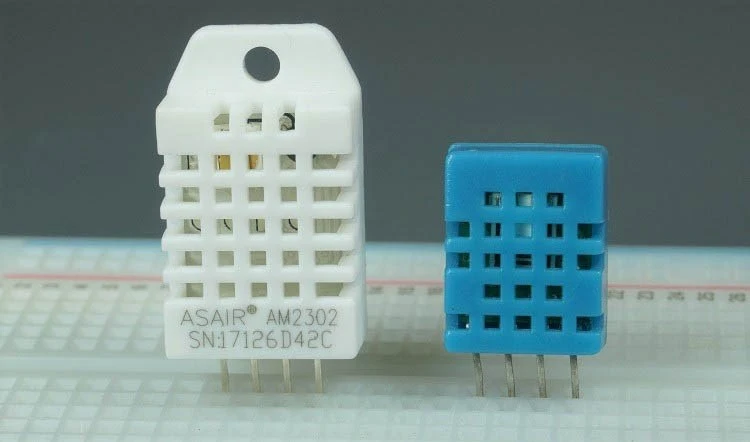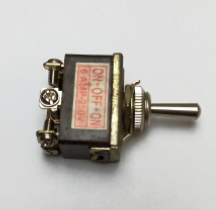
Temperature and humidity sensors are like the dynamic duo of environmental monitoring, always working together to give you a complete picture of your surroundings. Here’s a comprehensive guide to these sensors:
Temperature Sensors:
- Thermocouples:
- Principle: Based on the Seebeck effect.
- Pros: Wide temperature range, durable, suitable for high-temperature environments.
- Cons: Lower accuracy compared to some other types.
- RTDs (Resistive Temperature Devices):
- Principle: Measure temperature by correlating the resistance of the RTD element with temperature.
- Pros: High accuracy, stable over time, suitable for precision applications.
- Cons: Limited temperature range compared to thermocouples.
- Thermistors:
- Principle: The resistance of the thermistor changes significantly with temperature.
- Pros: Cost-effective, high sensitivity.
- Cons: Limited temperature range, lower accuracy than RTDs.
- Infrared (IR) Temperature Sensors:
- Principle: Measure the infrared radiation emitted by an object.
- Pros: Non-contact, suitable for moving objects, wide temperature range.
- Cons: Accuracy can be affected by the emissivity of the object.
Humidity Sensors:
- Hygrometers:
- Principle: Various types, including psychrometric, capacitive, and resistive.
- Pros: Wide range of applications, some are suitable for high-humidity environments.
- Cons: Accuracy can be affected by contaminants in the air.
- Capacitive Humidity Sensors:
- Principle: Measure changes in capacitance due to humidity-induced dielectric changes.
- Pros: Fast response, suitable for a wide humidity range.
- Cons: Calibration may be required.
- Resistive Humidity Sensors:
- Principle: The resistance of a material changes with humidity.
- Pros: Cost-effective, simple design.
- Cons: Limited accuracy compared to capacitive
- Gravimetric Humidity Sensors:
- Principle: Measure the change in mass due to water absorption or desorption.
- Pros: High accuracy, stable over time.
- Cons: Slower response time, may be sensitive to contaminants.
Combined Temperature and Humidity Sensors:
- Digital Sensors:
- Integration: Many modern sensors integrate both temperature and humidity measurements in a single device.
- Pros: Simplifies data acquisition, often with digital outputs (I2C or SPI).
- Cons: May have limitations in extreme conditions.
- Weather Stations:
- Integration: Some weather stations combine various sensors, including temperature and humidity.
- Pros: Provide a comprehensive environmental overview.
- Cons: Cost and complexity may be higher.
Tips for Usage:
- Calibration: Regular calibration ensures accurate readings.
- Placement: Proper sensor placement is crucial for accurate measurements.
- Environment: Consider the specific environmental conditions and choose sensors accordingly.
- Data Logging: Use data loggers for continuous monitoring and analysis.
Remember, these sensors play a vital role in various applications, from climate control in buildings to industrial processes and weather monitoring. Always check the specifications and choose sensors that best fit your specific needs. Anything else you’d like to explore in the world of sensors?
Written by kanchan kan
- Industrial Automation141141 products
- Cooling Fan44 products
- Indicators1111 products
- Plastic Casing66 products
- Sensor2323 products
- Sleeve and cables55 products
- SMPS88 products
- Solid State Relay Module22 products
- Switches1818 products
- Temprature Sensor11 product
- 3D Printing189189 products
- 3D printing118118 products
- Combination Kit4747 products
- Electronic743743 products
- Audio55 products
- Battery/Charger Accessories2828 products
- Capacitors6464 products
- Connector4646 products
- cooling fan11 product
- Diode3535 products
- Displays1212 products
- IC and Chips6565 products
- IOT and Wireless99 products
- Leds2424 products
- Microcontrollers55 products
- Modules/Shield7575 products
- MOSFET / IGBT1414 products
- Power Supply2525 products
- Resistors130130 products
- Sensors5959 products
- SMD2828 products
- Switches1414 products
- Transistors6868 products
- Wire and Cables1212 products
- Hardware3232 products
- Hand Tools1414 products
- Hardware Accessories1414 products
- Printing22 products
- RC Plane and Drone99 products
- Robotic147147 products
- BO Motors1313 products
- General Purpose DC Motors2929 products
- Motor Drivers88 products
- Robotic Wheels & Tyres1414 products
- Servo Motor2727 products
- Stepper Motors88 products
- Synchronous Motor11 product
- Science Fair Project7070 products
- Final Year Ready Project Kit11 product
- STEM KIT2222 products
- E Books88 products



Leave a Reply
You must be logged in to post a comment.